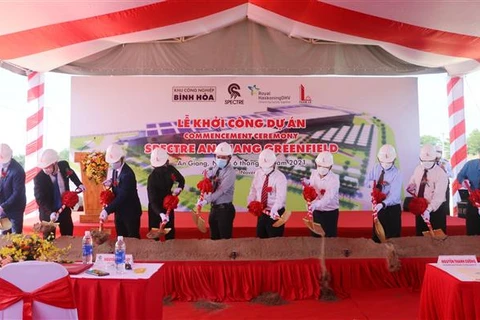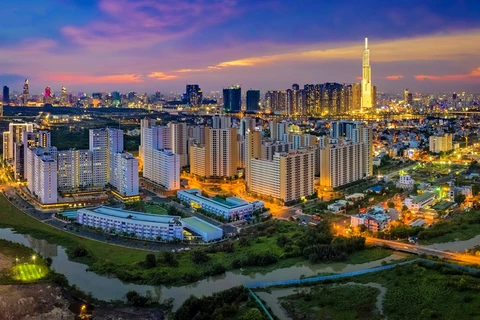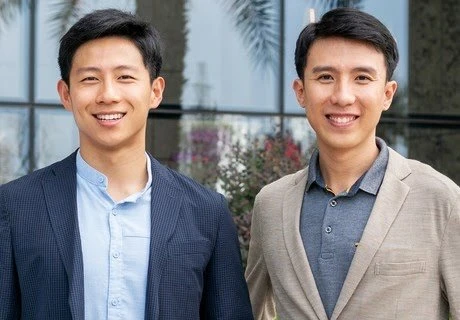Hanoi (VNA) – Demand for industrial and logistics estates in addition to ready-built factories and warehouses will continue to be the core of enquiries next year, according to an expert from property consultancy Savills Vietnam.
“However, in terms of new trends, data centres and cold storage facilities are in demand and have gained traction in 2020 and 2021,” John Campbell, manager of Industrial Services at Savills Vietnam told the Vietnam Investment Review. “Next year, we expect this to continue, as Vietnam is now on the radar for hyperscale facilities.”
Low-value industries are beginning to set up elsewhere in Southeast Asia as Vietnam no longer offers the same incentives, he said, adding that these industries such as textiles and furniture struggle to source affordable labour and land in Vietnam.
However, foreign and high value-added investors remain bullish on Vietnam’s long-term growth, Campell noted.
He further said that Vietnam is expected to continue its move up the value chain thanks to its stable growth, business climate, FTAs, and global production relocations.
In 2022 and beyond, it is also expected that some forecast trends to continue to emerge, such as Industry 4.0 and smarter manufacturing, modernising supply chains, sale-leasebacks, new IZ models and modern masterplans, data centres, and cold storage, he continued.
“The Government’s re-opening plan has instilled confidence in developers and investors,” the expert stated. “A successful 2022 will largely rely on international flights resuming, but the fourth quarter of 2021 is already looking more promising than the first three quarters.”
“Coupled with an encouraging re-opening plan, the Government’s avowed support for foreign investors and the sheer resilience and adaptability of local enterprises are promising. It paints a reassuring picture that not only will the country recover but is likely to come back stronger than ever.”/.
“However, in terms of new trends, data centres and cold storage facilities are in demand and have gained traction in 2020 and 2021,” John Campbell, manager of Industrial Services at Savills Vietnam told the Vietnam Investment Review. “Next year, we expect this to continue, as Vietnam is now on the radar for hyperscale facilities.”
Low-value industries are beginning to set up elsewhere in Southeast Asia as Vietnam no longer offers the same incentives, he said, adding that these industries such as textiles and furniture struggle to source affordable labour and land in Vietnam.
However, foreign and high value-added investors remain bullish on Vietnam’s long-term growth, Campell noted.
He further said that Vietnam is expected to continue its move up the value chain thanks to its stable growth, business climate, FTAs, and global production relocations.
In 2022 and beyond, it is also expected that some forecast trends to continue to emerge, such as Industry 4.0 and smarter manufacturing, modernising supply chains, sale-leasebacks, new IZ models and modern masterplans, data centres, and cold storage, he continued.
“The Government’s re-opening plan has instilled confidence in developers and investors,” the expert stated. “A successful 2022 will largely rely on international flights resuming, but the fourth quarter of 2021 is already looking more promising than the first three quarters.”
“Coupled with an encouraging re-opening plan, the Government’s avowed support for foreign investors and the sheer resilience and adaptability of local enterprises are promising. It paints a reassuring picture that not only will the country recover but is likely to come back stronger than ever.”/.
VNA























